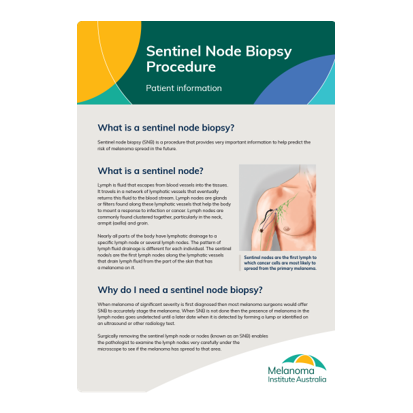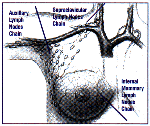

- #Sentinel node biopsy draining underarm smell how to#
- #Sentinel node biopsy draining underarm smell free#
It enables the surgeon to identify and remove the first draining lymph node - the "sentinel" node - in the underarm area. The newly developed procedure is called sentinel node biopsy. This dilemma has led researchers to develop a less invasive procedure that would accurately determine whether or not the axillary nodes are affected by cancer, without having to remove them all. "Sentinel node biopsy is now standard treatment." In fact, removal of the axillary nodes is occasionally associated with some scarring, numbness, and swelling of the arm. Clearly, in these patients, removal of the axillary nodes provides no benefit at all.
#Sentinel node biopsy draining underarm smell free#
However, today as many as 70% of patients with breast cancer have nodes that are free of tumor. Additionally, removing the lymph nodes greatly reduces the chance of tumor recurrence in the underarm area. These nodes, which are part of the lymphatic system that removes wastes from body tissue, may be the first place affected when breast cancer begins to spread.Īxillary nodes are routinely removed during breast cancer surgery in order to determine whether or not the cancer has spread to them. I will be seeing the head of oncology for that whole health system early in July and if he blows me off, I am out of there.As the issue of the safety of breast conservation was laid to rest, breast cancer researchers shifted their focus to the treatment of the axillary (underarm) lymph nodes. Since then I can still feel the place where the tourniquet was and my hand and wrist are definitely swollen. Anyway, I recently had a CT scan and the technician that set up my IV had the tourniquet on too tight (I kept telling him it was too tight, but he would not loosen it) and it was on way to long…I know over 10 minutes….maybe 20. I would think that is part of the physical part of my care. I cannot figure out why the oncologist cannot do this….Anyway, I have mentioned my concern about lymphedema to both and they show no interest and will not go there. She examines my breasts and orders my mammon’s. She is not the surgeon that did my surgery. Does your oncologist or surgeon get involved? The cancer center that I go to makes you see their surgeon on a regular basis who is supposed to take care of the “physical part of my cancer” whatever that means. I am curious about who found your lymphedema and who monitors it. I will be seeing the head of oncology for that whole health system early in July and if he blows me off, I am out of there.
#Sentinel node biopsy draining underarm smell how to#
I did all of that and I'm glad I had a clear understanding of the condition and how to treat it BEFORE I got it…….can't hurt……PLUS, the lymph system and how to have a healthy one is very overlooked in medicine and there are some great benefits to managing your lymph system and understanding it's function and health.

My advice would be……….don't 'worry' but do educate yourself on lymphedema – what to look for, how it's treated and what you can do to reduce your risk of ever getting it if possible. I spent about a year in physical therapy and massage therapy, followed by a 'scar revision' surgery which removed extra tissue and mostly resolved the issue. I will qualify it though……the surgeon had a rough time on the left side removing the node…it was tiny (which is good news because it meant right away that it didn't have cancer and also it wasn't on the side of my breasts where I had cancer anyway….sigh. I only had the sentinel nodes removed on both sides (I had a bi lateral mastectomy) BUT……….I did get lymphedema on my left arm. Hello Sandy Jr – I was also very worried about lymphedema as a result of the lymph node dissection.


 0 kommentar(er)
0 kommentar(er)
